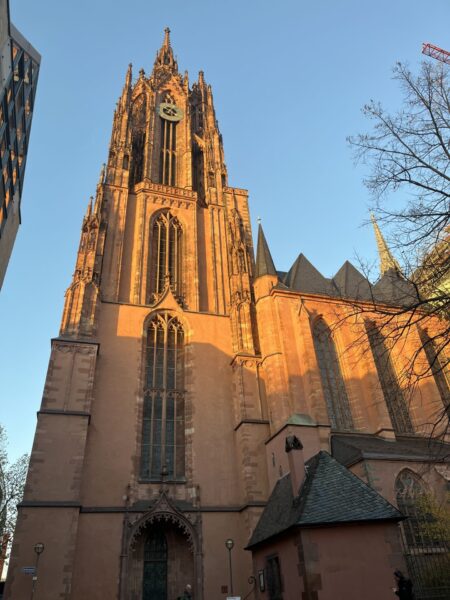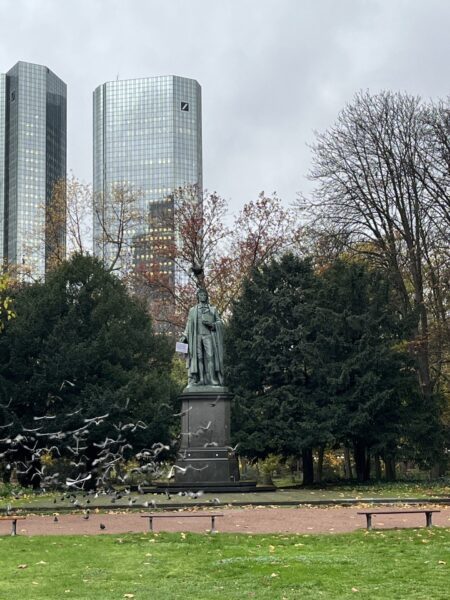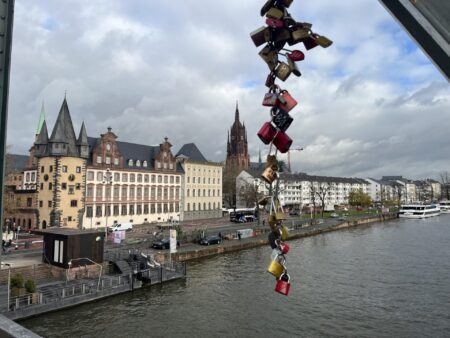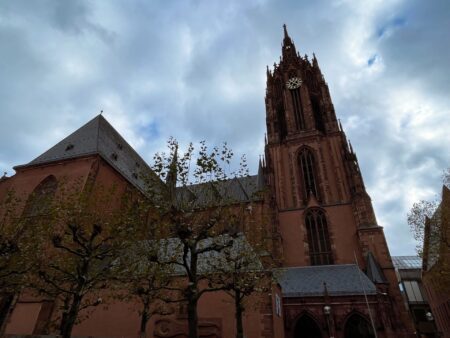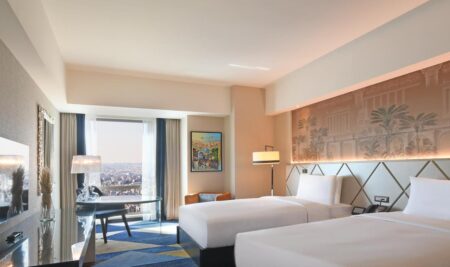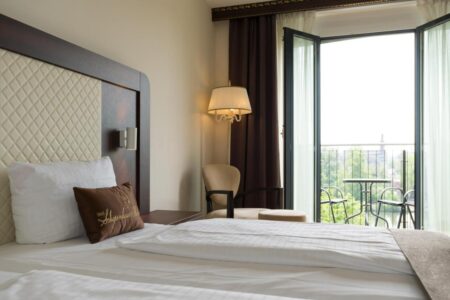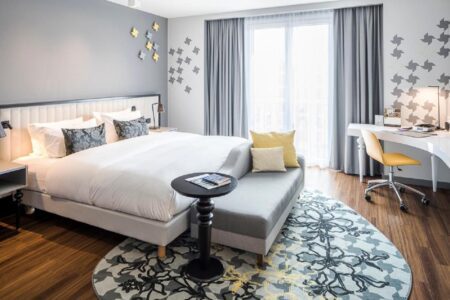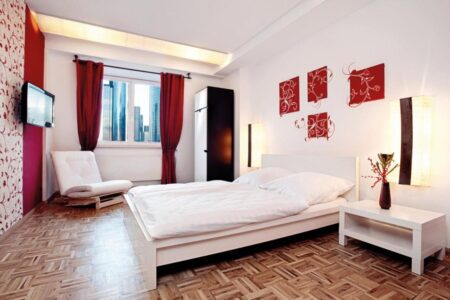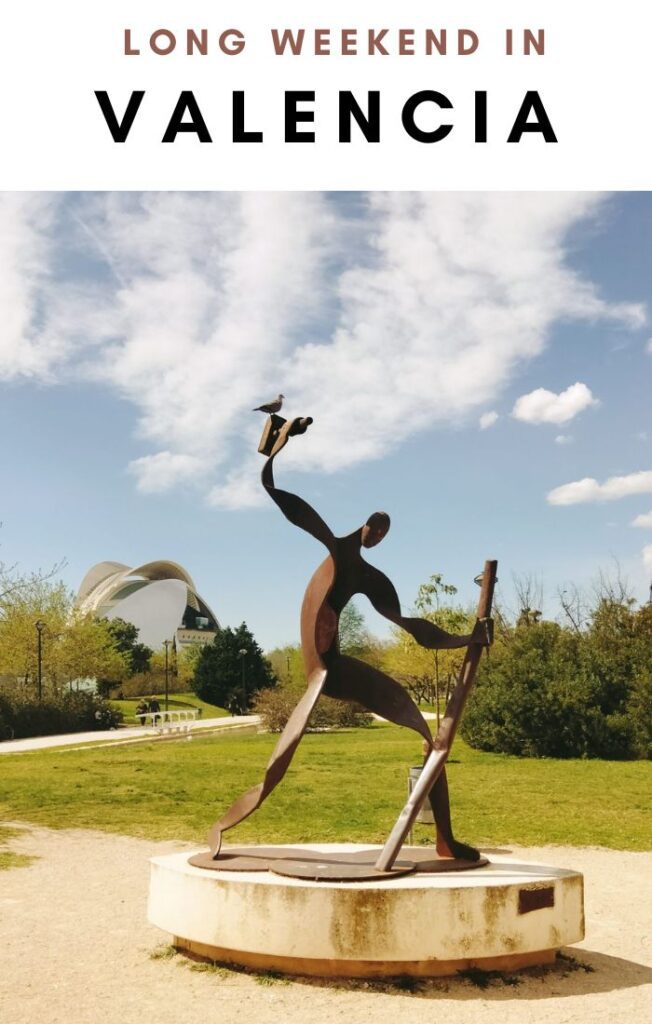Frankfurt, officially Frankfurt am Main, is one of the largest cities in Germany but is often overlooked by tourists in favor of other more popular destinations such as Berlin or Munich. The city is an economic powerhouse and the financial center of the country, and it is home to the European Central Bank and the German Stock Exchange.
There are some of the highest skyscrapers in Europe and the city center, as well as the museums at the River Main, attract millions of tourists every year
It is more likely that visitors arrive in Frankfurt because of its central airport, one of the busiest in the world than for a tourism visit. That being said, the city has a lot to offer. From its business district with tall skyscrapers (some of the tallest in Europe and most of the tallest buildings in the whole country are located in Frankfurt), to the old city with its churches and many museums on the river Main, to a large forest right within the city, It is also the city that gave birth to Goethe and that hosted Schopenhauer in his final years, therefore exuding a sense of cultural significance.

Germany Info & Stats
- Language: German is the official language.
- Population: 82 million (2019 est.)
- Timezone: UTC +1
- Ethnic Make-up: German 91.5%, Turkish 2.4%, other 6.1% (made up largely of Greek, Italian, Polish, Russian, Serbo-Croatian, Spanish)
- Religion: Protestant 34%, Roman Catholic 34%, Muslim 3.7%, unaffiliated or other 28.3%
- Political System: federal republic
- Currency: Euro (EUR)
- Credit Cards: Cards are widely accepted almost everywhere.
- Electricity: Socket types C and F
- Tipping Customs: 10-15% in restaurants, optional in bars
- Haggling Culture: Common in markets and flea markets
Weather
Average temperatures in summer are 26°C whereas in winter 4°C. In winter it is common for the temperature to go below zero and the city can experience snow. Rain can occur year-round.
The best time to visit is arguably during winter because of the typical decorations for Christmas. Like many other middle European countries, Christmas festivities completely change the outlook of the city, with temporary kiosks selling delicacies and shops filled with decorations, and the old town squares become a hub for gatherings of people.
Money
The currency is the Euro (EUR).
The exchange rate from US dollars is 1 USD = 1 EUR.
Credit Cards are widely accepted although small items such as coffees are generally not paid with cards. Being the city hosting the European Central Bank and central hub for many large multinational banks, ATMs are commonly distributed around the city.
Prices: Frankfurt can be pretty expensive for some things being a highly developed city, although it is cheaper than other major destinations in Germany such as Berlin.
Tipping: As with other destinations in Europe, tipping for small items is usually done by rounding up to the next Euro. For restaurants common practices are 10% although tipping is not required.
Getting around
Frankfurt is in the heart of Germany and, on top of its busy airport, is a central hub for transportation throughout the country. As such its train network is very developed.
The city itself has an extensive network of rail trains and the underground (U-Bahn). Prices are not very cheap (e.g. a day ticket costs 7€, but a single ticket can be used for several methods of transport). Despite being a large city, as a tourist you will probably be visiting only the city center (and perhaps the large parks and forests nearby) and walking around is perfectly doable.
Frankfurt is also very bike-friendly and bikes can be easily rented throughout the city.
There are many Taxis aimed to serve all business travelers. Although pricey it is an easy way to get around the various parts of the city (they also drive quite fast as they are used to these types of travelers).
Safety
Safety: Germany is extremely safe but Frankfurt is less so compared to other cities of the country. The biggest risk is pickpockets. Although historically there haven’t been any major terrorist threats and security is very high, the city is home to the German Stock Exchange and European Central Bank so there is the possibility of unrest or popular manifestations.
Natural risks: All of Germany is very safe when it comes to natural hazards and there are no risks.
Emergencies number: 112, +34-061 (emergency medical services), +34-091 (police)
Tips & Impressions
- I went to Frankfurt after a 2 months stay in Mexico and experienced quite a culture shock when arrived. Especially from the silence of the city. Both at night and in the early morning, everything was incredibly quiet. As expected from a business center, people in the morning would simply walk, or ride their bikes to work and modern cars and electric trams just increased the general silence in the streets.
- As mentioned above in the Climate section, visiting the city at the end of November or December is an experience in itself, with wooden kiosks selling delicacies, carousels for children, and shops decorated for the Christmas festivities all around. In this period it is possible to sip a hot Glühwein in the old town square surrounded by people and eat wild game meat in the restaurants.
- I visited several museums (4) during my stay, each with their (for example there was a large and beautiful temporary exhibit of Chagall at the Schirn Museum. However, the Stadel Museum really impressed me with the quality and number of works. The two floors of the museum include works of Manet, Chagall, Renoir, and older classical art by Botticelli, Canaletto, Tiepolo
Deals for Frankfurt
Where to stay
Luxury
Boutique & Eco-friendly
Budget & Local Experience
Travelogue
Perhaps it was because I arrived in Frankfurt after having spent almost two months in Mexico, but the weather in November was sort of a shock to me and I ended up spending a lot of time indoors rather than visiting the city. I did my usual city walks, primarily in the old city center, but spent more time in museums and in cozy cafes, enjoying the great beers, hot chocolates, delicious desserts and all the food that can be expected during autumn in central Europe (so street food stalls with roasted chestnuts and mulled wine everywhere, and restaurants serving game meat).
The art museums were impressive, with the Schirn museum in particular also because of the lack of crowds, which could not be said for the Stadel museum which had a temporary exhibition of Chagall that was unbelievably crowded, almost impossible to move let alone admire the artworks.
- Day 1
- Day 2
- Day 3
My accommodation was Hotel Schopenhauer Hof
Located right on the Main river in the old city. A perfect location for exploring the riverside and old town, and strategically located near several museums.

Shirn Museum
Städel Museum
